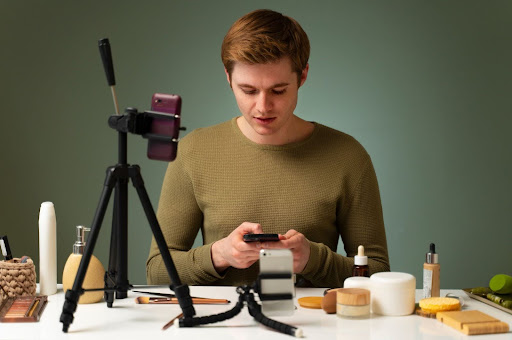How to Choose the Right Social Media Marketing Agency for Your Brand’s Success
Social media is one of the most powerful tools for any brand today. It helps businesses connect with customers, build awareness, and grow at a faster rate than ever before. But managing multiple platforms, creating content, and tracking results can be a lot to handle. That’s where the right social media marketing agency comes in. In this blog, we will explain why hiring a professional agency matters and what to look for when choosing one. Why Hiring a Social Media Marketing Agency Matters Many businesses try to manage their social media on their own, but it often becomes a full-time job. A social media marketing agency brings a team of experts who understand strategy, content creation, and analytics. They know how to use data to improve performance and make every post count. Agencies also have access to the latest tools for scheduling, design, and reporting. They can track how campaigns perform across Facebook, Instagram, LinkedIn, and TikTok. This means your brand can grow faster and reach the right audience without wasting time or money. Hiring professionals allows you to focus on your business while they handle the creative side. You get consistent posting, strong engagement, and clear insights about what works best for your brand. Key Qualities to Look for in a Social Media Marketing Agency Not all agencies are the same. The best ones have a mix of creativity, strategy, and experience. When comparing agencies, look for these key qualities: 1. Proven results and experience Check if the agency has worked with brands similar to yours. Review their case studies to see how they helped clients grow followers, boost engagement, or increase sales. 2. Platform expertise Different platforms need different strategies. A good agency knows how to create content that fits each one, whether it’s videos for TikTok or professional posts for LinkedIn. 3. Clear communication You should always know what’s happening with your campaigns. The right agency shares updates, reports, and ideas regularly so you can stay informed. 4. Creative thinking The best agencies know how to stand out. They use original ideas, visuals, and trends to make your brand more memorable. 5. Industry understanding Every industry has its own audience and tone. Select an agency that understands your target market and knows how to effectively communicate with your customers. How to Evaluate an Agency’s Portfolio and Results Before you sign any contract, it is important to carefully review an agency’s past work. A strong social media marketing agency will gladly share examples of campaigns they have managed and the results they achieved. Look for case studies, social media posts, and sample campaigns to get a clear sense of what they can do for your brand. Focus on real, measurable results rather than only visually appealing designs. For example, ask for data showing how their campaigns increased engagement, boosted website traffic, or converted followers into customers. Consistency matters; so you must check if they maintain a regular posting schedule and keep a consistent brand voice across campaigns. Another helpful way to evaluate performance is by reading client reviews or testimonials. These can give you insights into how well the agency communicates, meets deadlines, and handles challenges. You can also reach out to previous clients if possible to hear first-hand experiences. Remember, past work is one of the best indicators of future success, so take your time to assess it carefully. Questions to Ask Before You Hire a Social Media Marketing Agency Asking the right questions helps ensure that the agency you choose aligns with your goals and values. Here are some important questions to consider: A trustworthy agency will answer these questions honestly and clearly. Pay attention to their communication style. If they listen to your needs, explain their process in simple terms, and provide thoughtful answers, that is a strong indicator they will be a reliable partner. Making the Final Decision to Find the Right Fit for Your Brand Choosing the right social media marketing agency is about more than just cost or reputation. It is about finding a partner that truly understands your brand’s voice, values, and goals. The best agency feels like an extension of your team, not just a vendor. Take your time to compare multiple options. Review proposals carefully, schedule conversations with each team, and evaluate how well they understand your brand. Consider how they approach creativity, strategy, and communication. An agency that shares your vision and brings fresh ideas can help you reach new levels of engagement and growth. Once you find the right fit, your relationship will go beyond posting content. You will have a partner invested in your success, helping you make strategic decisions, reach your audience more effectively, and strengthen your brand every day. Choosing wisely now can save time, money, and stress in the long run. Final Thoughts Picking the right social media marketing agency can shape your brand’s online success. From building trust with your audience to creating content that drives results, the right agency makes all the difference. By following these steps, you can choose a partner who truly understands your goals and helps your brand reach new heights. Start your search with confidence and remember; great marketing begins with the right team by your side.










